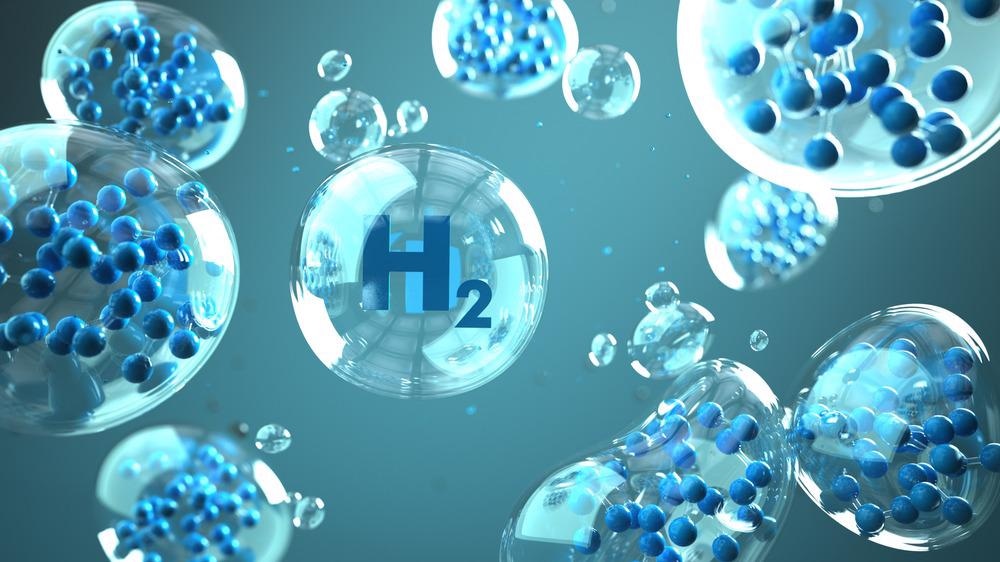1D nanowires are of tremendous relevance for gas-sensing technologies due to their large surface-to-volume ratio and efficient electronic transportation routes. In an article published in the journal ACS Applied Nano Materials, colloidal solvothermal synthesis of super-thin palladium nanowires (PdNWs) has been reported for use in rapid, sensitive H2 sensor devices.

Study: Ultrathin Palladium Nanowires for Fast and Hysteresis-Free H2 Sensing. Image Credit: Alexander Limbach/Shutterstock.com
The Undeniable Importance of Hydrogen Sensing
Hydrogen (H2) is a colorless, tasteless gas with a large energy density frequently regarded as a more environmentally friendly and renewable substitute to traditional power sources like fossil fuels. As such, hydrogen is often placed at the heart of a futuristic energy systems where it answers any and all power demands ranging from transport to household heating and electric power production.
Hydrogen is, however, an extremely combustible element with a smaller explosive threshold of 4 % in the atmosphere, a lower igniting energy, and a high penetration through various substances. Sensory technologies that detect hydrogen quickly and reliably are necessary because of its extremely combustible nature and tendency to generate an explosive combination in air. Such detectors ought to be power efficient, minimal in expense, and most significantly, capable of detecting hydrogen in a timely and dependable manner.
Palladium-based Chemiresistive Sensors are the Hydrogen Sensors of Choice
Although not every single criterion for hydrogen detectors have been set, significant endeavors have been made to meet the goal of one second reaction period to 1% hydrogen. So far, some optical hydrogen detectors have managed to achieve this but their the total cost of constructing optical hydrogen detectors remains expensive.
Chemiresistive detectors are favored over other forms of hydrogen detectors due to their inexpensive price and simplicity of production, and also their easy-to-read outputs. Among chemiresistive sensing elements, palladium (Pd) is favored for ambient temperature hydrogen sensing due to its distinctive capability to reversibly and selectively produce PdHx in the presence of hydrogen at ambient settings.
What is the Best Synthesis Method for One-Dimensional Nanowires for H2 Sensing?
1D nanowires offer considerable benefits for gas-sensing technologies. Although earlier identified lithography-synthesized palladium nanowires (PdNWs) for hydrogen detection have an increased surface-to-volume ratio and excellent electrical characteristics, they do not inherently possess high catalytic activity and may necessitate additional adjustments to enhance their output. Furthermore, the size of lithographically manufactured palladium nanowires is constrained by manufacturing capacities, which restricts their capability.
The lithographic synthesis of palladium nanowires with diameters of <10 nm, for example, remains a difficult and costly job.
Palladium nanowires with extremely large aspect ratios and tiny diameters may be created via solution-phase synthesis. Nonetheless, they are frequently topped with ligands or surfactants that are hard to detach and impair overall sensing capabilities. An ozone-generating ultraviolet (UVO) source of light is an efficient method of eliminating ligands from the exterior of nanomaterials, which might reveal active spots for quick hydrogen breakdown and sensing and lower contact impedance at nanowire connections.
Key Findings of the Study
In this study, the researchers described a simple and sustainable solvothermal fabrication of extremely thin palladium nanowires (diameters from 3 to 5 nm).
The nanostructures then underwent UVO treatment to remove any organic ligands that had been bound to their exterior. UVO-treated palladium nanowires were distributed in toluene to make a nano-ink, which was then utilized to construct a detector on an IDE using a straightforward drop-cast approach.
The resultant sensor demonstrated hysteresis-free and rapid reaction to 1% hydrogen in air, with reaction and recovering durations of 3.4 and 11 seconds, respectively, as well as strong durability and consistency through repeated rounds of exposure to 1% hydrogen in the atmosphere.
The sensor detected 1 to 0.1 percent hydrogen in air throughout a wide span of temperatures (15 to 80 °C) and demonstrated remarkable specificity of responsiveness to hydrogen when compared to equivalent amounts of CO, CH4, and CO2. The sensor's excellent functionality might be ascribed to its ligand-free exterior, extremely thin diameter, and the existence of catalysis hot spots caused by lattice strain at the PdNWs' twin borders.
Reference
Kumar, A., Thundat, T., & Swihart, M. T. (2022). Ultrathin Palladium Nanowires for Fast and Hysteresis-Free H2 Sensing. ACS Applied Nano Materials. Available at: https://pubs.acs.org/doi/10.1021/acsanm.2c01211
Disclaimer: The views expressed here are those of the author expressed in their private capacity and do not necessarily represent the views of AZoM.com Limited T/A AZoNetwork the owner and operator of this website. This disclaimer forms part of the Terms and conditions of use of this website.